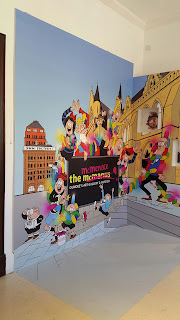We started by watching a short video on the history of Mario, from his first appearance as Jumpman in Donkey Kong through to modern incarnations in 3D worlds. As the Donkey Kong game was originally supposed to be a Popeye game (with Bluto as Donkey Kong, and Popeye as Mario) it was also an opportunity to introduce the kids to Popeye cartoons.
As well as playing Mario games we watched two films this week that gave a bit more cultural context to the games. The Wizard is a 1980s film that is less about product placement and more an advert for Nintendo games consoles, and it also introduced the game Super Mario Bros. 3 to the world.
We also watched The King of Kong: a fistful of quarters the classic video game documentary, that has received renewed attention this year with Billy Mitchell being stripped of his world record scores. As any child brought up on the exploratory world of Mario Odyssey quickly realises: old arcade games are hard!
Solomon also did a couple of craft activities. He drew Mario, both in pixels and freehand, and also made the Nintendo Labo motorbike to play Mario Kart with on the Switch.
 |
| Mario Mario |
.
We bought the Nintendo Labo Variety Kit when it first came out, and whilst they are a great way of demonstrating the potential of sensors and computers, the projects can be quite fiddly and take a while so you have to block out quite a bit of time to do them.
Next week's project: the weather














